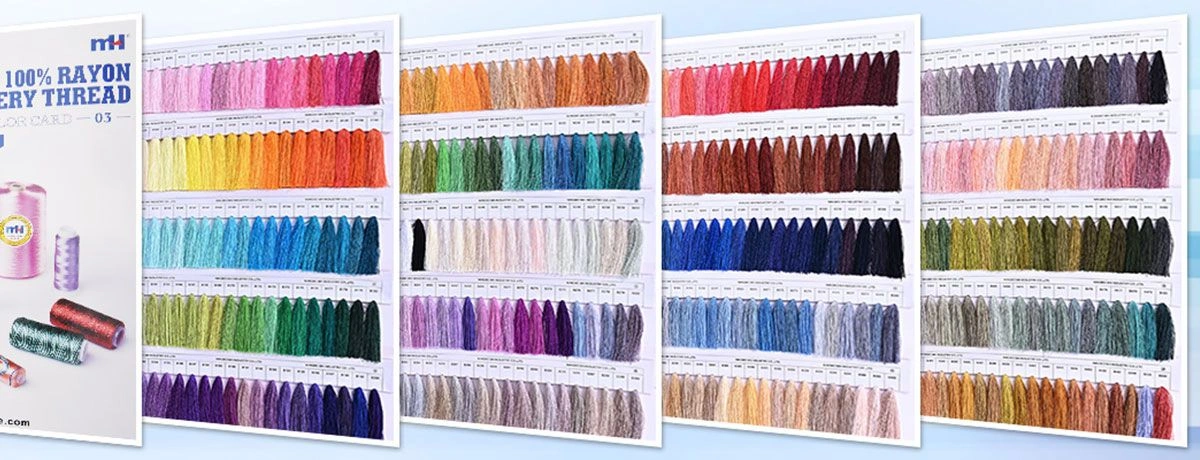Conversion Chart for Embroidery Thread: Navigating the World of Machine Embroidery

Machine embroidery has become a beloved craft among enthusiasts, crafters, and seamstresses. Its appeal lies in the ability to transform plain fabrics into intricate works of art with texture and color. Whether you’re a seasoned embroiderer or just dipping your toes into this vibrant world, understanding the tools and resources available is crucial. Among these, thread conversion charts stand out as indispensable tools. These charts provide an extensive list of thread colors from various brands, ensuring you have a wide selection of options.
The Vital Role of Thread Conversion Charts
In machine embroidery, a thread conversion chart is a key resource. It helps enthusiasts seamlessly convert and transition between different brands of threads. This tool ensures that no matter the brand, the outcome remains consistent, allowing for a perfect match of colors and textures. With an embroidery thread conversion chart, users can explore the myriad of thread options without fear of mismatched colors.
The importance of these charts cannot be overstated. They provide a bridge, helping users translate colors from one brand to another. This capability is particularly beneficial when a preferred thread is unavailable, ensuring the project continues without interruption.
Popular Thread Brands in Machine Embroidery
Several thread brands dominate the machine embroidery landscape, each offering unique features and benefits. Brothread is known for its cost-effectiveness without sacrificing quality. It provides a vast array of colors, making it a popular choice among hobbyists. The Simthread color chart, on the other hand, stands out for its vibrant hues and durability, ideal for projects that need to withstand frequent washing.
Brother embroidery thread is synonymous with reliability, often recommended for beginners due to its ease of use and consistent results. This thread’s compatibility with a variety of machines makes it a staple in many crafting rooms. Popular brands like Coats and Robison Anton also offer extensive color ranges and conversion tools, making it easier to match colors across different embroidery threads. Each brand brings something different to the table, enriching the embroidery experience with their distinct qualities.
How to Use a Thread Conversion Chart
Using a thread conversion chart effectively involves a few simple steps. Begin by identifying the current thread brand, thread numbers, and thread colors you have. Then, using the chart, locate the equivalent color in the brand you wish to switch to. It’s essential to note that while charts provide close matches, some slight variations in color may occur.
Accuracy is key. Always compare the thread samples under natural light whenever possible. This practice ensures the closest possible match, maintaining the integrity of your project. Additionally, keeping a physical chart handy can be more beneficial than relying solely on digital versions, as screen colors may vary.
Avoiding Common Mistakes with Thread Charts
One frequent mistake in using thread conversion charts is trusting the first conversion found without comparison. It's advisable to cross-reference with other charts or samples when possible. Misinterpretation of the chart can lead to mismatched colors, compromising your final product.
Another pitfall is neglecting to consider the type of thread. Different threads can behave differently on various fabrics, even if they appear to match in color. Always test a small swatch before committing to a larger section of your project.
Case Studies and Real-World Examples
A small embroidery business owner discovered significant cost savings and improved thread consistency after adopting a thread conversion chart. By utilizing threads from multiple brands, the business could effectively meet diverse customer needs without sacrificing quality.
In another instance, a seamstress successfully used a conversion chart to match a discontinued thread color, thereby completing a custom project that adhered to the client’s specific color requests. This example highlights the charts’ utility in ensuring continuity and satisfaction in customer projects. Additionally, these charts are invaluable for matching various thread colors to Robison Anton colors, thanks to a comprehensive database containing over 23,000 embroidery thread colors.
Future Trends in Machine Embroidery
The future of machine embroidery is intertwined with technological advancements. Innovations in thread production are paving the way for more vibrant, durable, and eco-friendly options. These developments are expected to expand the capabilities of existing machines, allowing for even more intricate designs.
Thread conversion charts will continue to evolve alongside these innovations, incorporating new threads and colors. They will remain essential tools for embroidery enthusiasts, facilitating creativity and exploration.
Conclusion and Community Engagement
Thread conversion charts are invaluable assets for anyone involved in machine embroidery. They offer a practical solution for navigating the complexities of thread selection across different brands. For those eager to deepen their understanding and enhance their craft, engaging with the community of embroidery enthusiasts can provide further inspiration and support.
Explore more about thread conversion charts and share your experiences with fellow crafters on social media. This interaction not only enriches your own knowledge but also contributes to the collective wisdom of the embroidery community. Click on the links to explore more about thread conversion charts.
